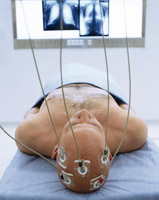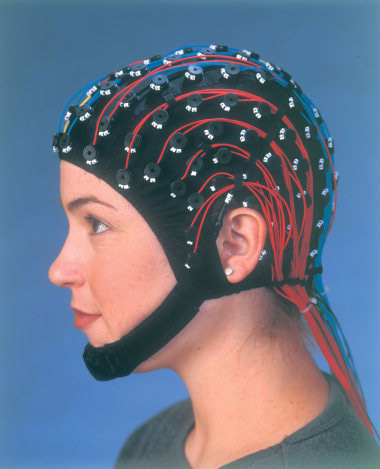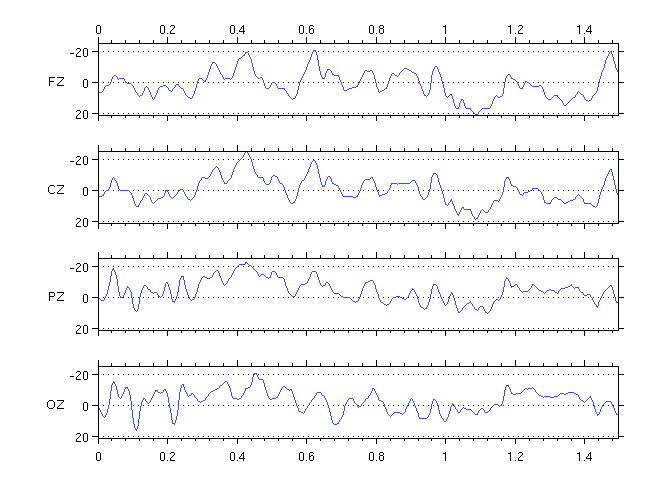Biosensor 1
Electroencephalogram (EEG)
The Electroencephalogram is a biosensor that tests brain wave activity. It is used to detect neurological problems by examining the electrical activity of the brain. Electrical activity is when brain cells send information to one another through electrical impulses.
An EEG can detect neurological problems such as:
Epilepsy - a group of syndromes manifested in recurring seizures. It is a result of brain damage, a tumor, and infection; in some cases the cause of epilepsy is unknown.
Loss of Consciousness - not being fully physically aware
Dementia - an inability to preform tasks like getting dressed, thinking, and controlling emotions due to a loss of brain activity. People with dementia also have memory loss. Dementia can result from a tumor, head injury, stroke, alcohol dependency, or a disease like Alzheimer's.
A Brain dead person - When there is no brain activity. It is irreversible, and looks like a flat line on a EEG.
Narcolepsy - a disorder that affects the regulation of sleep. People unexpectedly fall asleep during times of wakefulness.
Physical Impairment, spinal cord injuries, and paralysis
An EEG can also be used for monitoring brain activity while a person is under general anesthesia during a brain surgery.
An Electroencephalogram is preformed by a EEG technologist in a hospital or in a physicians office. The technologist places 16-25 metal electrode sensors to the persons scalp. The electrodes stick to the scalp with a paste so that they do not move out of place. Sometimes a cap is used with electrodes already placed on it. The sensors are connected to a monitor with wires. On the monitor a wavy line is shown for each electrode sensor. From those lines a diagnoses can be determined by a neurologist, a nervous system specialist.



Works Cited
Information on EEG
http://www.nlm.nih.gov/MEDLINEPLUS/ency/article/003931.htm andhttp://www.webmd.com/epilepsy/electroencephalogram-eeg-21508 and
http://www.webmd.com/epilepsy/electroencephalogram-eeg-21508?page=2
Information on Electrical activity
http://www.birf.info/home/library/med_cond/seizures/seiz_seizbrinj.html
Information on Epilepsy
http://www.webmd.com/epilepsy/default.htm
Information on Consciousness
http://dictionary.reference.com/browse/conscious
Information on Dementia
http://www.nlm.nih.gov/medlineplus/dementia.html
Information on brain dead
http://dictionary.reference.com/browse/brain%20dead
Information on Narcolepsy
http://www.webmd.com/sleep-disorders/guide/narcolepsy
Picture of Electrodes
http://www.emoryeastside.com/CPM/neuo1.jpg
Picture of Electrode cap
http://ese.wustl.edu/~nehorai/research/eegmeg/EMEG-Overview_files/eeg2.jpg
Picture of EEG Monitor
http://airlab.elet.polimi.it/var/plain/storage/images/projects/p300_based_brain_computer_interface/example_of_eeg_recording/17327-1-eng-GB/example_of_eeg_recording.png